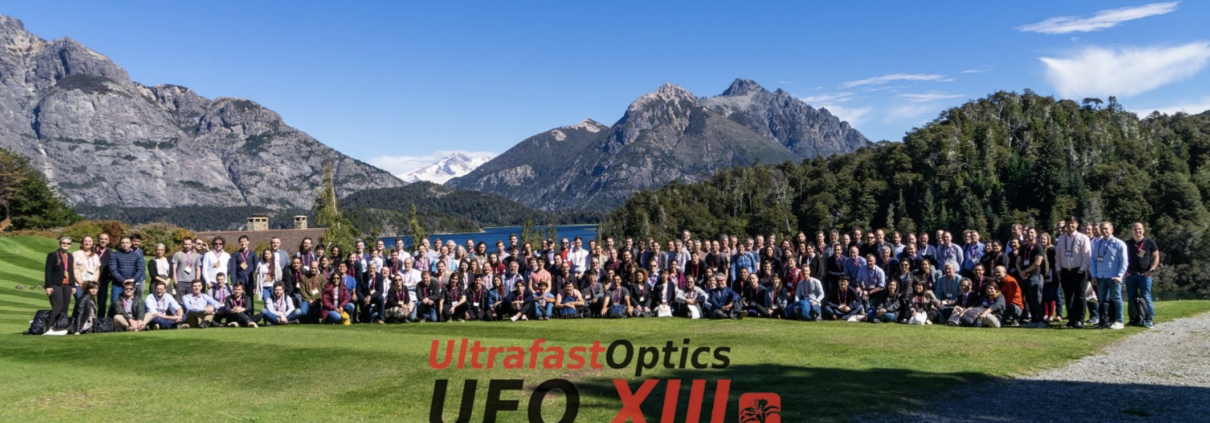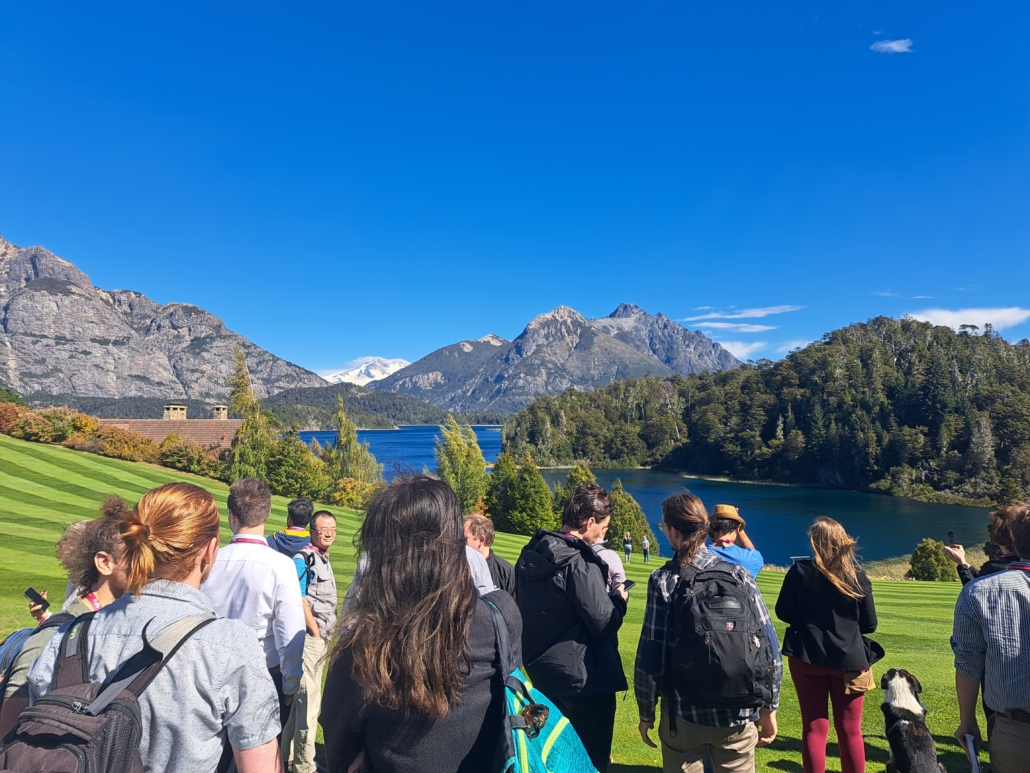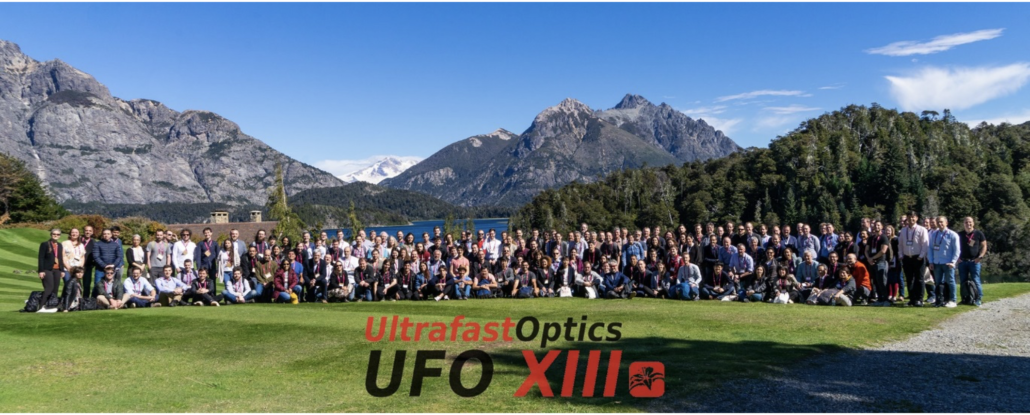Ultrafast Optics Conference in Argentina
Dr. Jean-Christophe Chanteloup and Dr. Milutin Kovacev (NanoxCAN WP1&2 leaders) attended the Ultrafast Optics conference 13th edition (UFOXIII) in Bariloche, Argentina, from March 26th to 31st 2023.
Dr. Milutin Kovacev presented a poster entitled “X-ray dose rate and spectral measurements from ultrafast laser-matter interaction” while Dr. Jean-Christophe gave a talk entitled “High average/peak powers Coherent Beam Combination digital lasers”.
Among the numerous interesting talks given, 3 raised interest with respect to the NanoXCAN scientific work:
– Amit Agrawal, from the National Institute of Standards and Technology gave an invited talk entitled: “Arbitrary Space-time Wave Packets Synthesis” where he addressed the ability to tailor an ultrafast pulse on demand. A task carrying far-reaching impacts on numerous fields, including NanoxCAN. He demonstrates that the arbitrary spatiotemporal synthesis of ultrafast optical transients by leveraging the multifunctional control of light at the nanoscale offered by metasurfaces (see image of the nanopillars bellow), enabling ready-synthesis of complex space-time wave packets over an ultrawide bandwidth. Contacts were made and discussions are ongoing for potential sample testing on XCAN laser.

– Christoph Heyl, from German Electron Synchrotron DESY, 2. Helmholtz-Institute Jena gave an invited talk entitled: “Opportunities for ultrafast lasers and nonlinear optics opened by multi-pass cells” where he explained that nonlinear multi-pass cells (MPCs) have brought along exciting possibilities to the field of ultrafast optics, ranging from great advances for post-compressed ultrafast lasers to novel frequency conversion schemes. He discussed the opportunities offered by MPCs and addressed the issue of Laser induced Damaged Threshold (LIDT)/high average power management/reflectivity of the mirrors used in such cavities, a key point for nanoXCAN.
– Simon Vallières, from University of Waterloo, Canada presented a method to generate MeV-ranged high dose-rate electron beams in ambient air through the tight focusing of a mJ-class femtosecond laser. They demonstrate that relativistic intensities can be obtained reached, a goal we share with nanoXCAN.
You can find more information in this link: (https://ultrafastoptics2023.org/)











